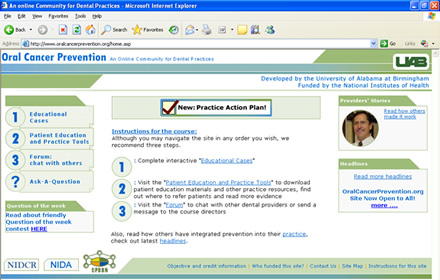News
For the latest on what is happening please click here.
| 2012 | 2011 | 2010 | 2009 | 2008 | 2007 | 2006 | 2005 | 2004 | 2003 |
2008 News
Alabama Academy of Pediatric Dentists Annual Meeting held December 5, 2008 at the Birmingham Sheraton Hotel
Monday, December 15, 2008
Jackie Love and Sherry Sutphin, Research Assistants and DPBRN Regional Coordinators, managed an exhibit at the annual meeting of the Alabama Academy of Pediatric Dentists December 5, 2008 at the Sheraton Hotel in Birmingham, AL. They presented a table display and answered questions about the upcoming DPBRN study entitled "Prevalence of Questionnable Occlusal Caries Lesions" with Dr. Sonia Makhija as Principal Investigator. The DPBRN will be recruiting general dentists and pediatric dentists to participate in this study. There were approximately 75 attendees at this meeting.
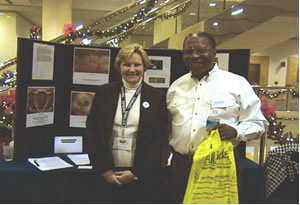 |
 |
Dental amalgam is being phased out in Denmark
Thursday, December 11, 2008
On October 1, 2008, The National Board of Health in Denmark released its new guidelines regarding the use of dental amalgam. Due to environmental reasons, composite resins will now be used in place of amalgams. The use of amalgams will be restricted to cases of difficult accessibility, replacing a large amount of tooth structure, or a large space between the adjacent tooth. Please click here to view the guidelines. The implications of these guidelines have been discussed in the latest issue of the Danish Dental Journal. Please click here to read the English translation.
Fall 2008 Newsletter and Testimonials
Thursday, December 04, 2008
The Fall 2008 DPBRN Newsletter has been mailed out, which also includes an insert with testimonials from our practitioner-investigators. Please click here to view the newsletter. Please click here to view the testimonials.
DPBRN successfully addressed Scandinavian ethics committees requirements for doing the DPBRN study entitled "Patient satisfaction with dental restorations"
Tuesday, November 25, 2008
All federally-funded human participants research conducted in the United States must be reviewed and approved by an Institutional Review Board (IRB). Outside the United States, IRBs may be referred to as "ethics committees". Unique to the PBRN context, a healthy tension exists between the need to conduct research that is directly relevant to daily clinical practice, protect confidentiality, provide informed consent, minimize burden on practitioner-investigators and their patients, while at the same time making it all work in a single research project across different regional clinical settings with different IRB requirements.
Effectively addressing regulatory and human participants protection issues with IRB and grants administration entities is an important component of conducting research in large collaborative networks. If research is funded by a United States federal agency, U.S. regulations will need to apply even if the research is conducted outside the United States. This means that the study will need to comply with regulations of both the host country and the United States. This circumstance can create some unique challenges when seeking IRB approval and designing studies.
DPBRN recently encountered two significant regulatory differences between the DPBRN IRBs in the United States and the ethics committees in its Scandinavian region, both of which had to do with the DPBRN study entitled "Patient satisfaction with dental restorations". The Swedish ethics committee initially pondered a requirement that DPBRN could not ask participants their racial and ethnic identification. However, this would have conflicted with National Institutes of Health (NIH) policy that mandates that all NIH-funded clinical research ask such questions (click here to see the "NIH Policy and Guidelines on The Inclusion of Women and Minorities as Subjects in Clinical Research"), meaning that no NIH-funded clinical research could be done in that area of Sweden. Therefore, following further discussion with DPBRN, the Swedish ethics committee decided against imposing this new requirement.
In the DPBRN regions in the United States, participants in the "Patient satisfaction with dental restorations" study are mailed a participant incentive card after they mail a completed questionnaire to the appropriate DPBRN Regional Coordinator. Recently, the Danish, Swedish and Norwegian ethics committees decided that there can not be any kind of compensation provided to patients as an incentive to participate in a research study. This policy now applies to all research studies conducted in these countries. However, it is permissible to let the DPBRN practitioner-investigators hand out a small gift to all patients when the patients are given a Patient Satisfaction Questionnaire in this study. That is, this is done before participants would complete the questionnaires, not after they return them. Therefore, the investigators in the DPBRN Scandinavian region at the University of Copenhagen developed a bag for this Patient Satisfaction Study. The bag (photograph below) contains dental floss, tooth picks, toothpaste and toothbrushes, together with a DPBRN brochure, and includes the DPBRN logo on the bag. The practitioner-investigators in the Scandinavian region are provided all the bags that they will need to conduct the Patient Satisfaction Study.
As it has done from its inception, DPBRN continues to remain committed to engaging all of its IRBs in collegial discussions to identify common ground within regulatory bounds, such that we identify customized solutions for all of our studies. These solutions improve the acceptability of PBRN research to patients, practitioners, and university researchers alike!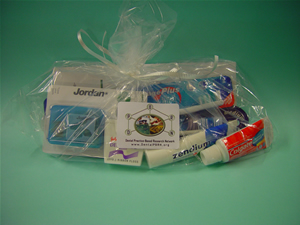
DPBRN link now on Hispanic Dental Association website
Monday, November 24, 2008
The Hispanic Dental Association now has a link to DPBRN on its website. Click here to view its website. To view the DPBRN link, click here.
PBRN research incorporated into the UAB School of Dentistry Curriculum
Friday, November 21, 2008
For the past few years, lectures have been given to UAB School of Dentistry students and faculty regarding practice-based research. For example, Dr. Gregg Gilbert, Network Chair of DPBRN, has given presentations to both the entire student body and faculty at the annual UAB School of Dentistry Research Day about the PBRN research context and its importance. Dr. Sonia Makhija, Director of Communications for DPBRN, has given lectures to junior dental students on DPBRN, including past, present, and future studies. After the lecture, each student submits a topic idea for a possible study. Clinical photographs from the DPBRN "Assessment of caries diagnosis and caries treatment" questionnaire are shown to the students with possible treatment options. They compare their decisions with decisions made by practitioner-investigators in each of DPBRN's five regions, and this has proven to be a fun learning experience.
In July 2008, the UAB School of Dentistry began a new curriculum focused on case-based learning. With this new change, each year students will now be exposed to practice-based research, its benefits to daily clinical practice, and how the latest evidence can be quickly translated into routine use in their clinical procedures. For example, after DPBRN completed its first randomized clinical trial, it provided a key educational resource from that trial, an interactive web site to promote tobacco cessation activities in dental practice that was designed for dental care providers. The web site is now publicly available at www.oralcancerprevention.org. Having learned of DPBRN studies, the PBRN research context, and its impact on clinical practice, upon graduation students leave with a better understanding of the role of scientific evidence in daily clinical practice, the role of PBRN research in clinical research, and their place in it. Because they also will be in contact with other DPBRN practitioner-investigators in the community, they will be able to more effectively interact with their DPBRN colleagues in their own community and throughout the network.
The latest results from DPBRN's first clinical trial are now publicly available
Friday, November 21, 2008
The latest results from DPBRN's first randomized clinical trial are now available. See the related story below of August 13, 2008 entitled "DPBRN Has Completed Its First Randomized Clinical Trial (RCT) - an RCT on Tobacco Cessation Counseling In Dental Practices". The clinical trial was called the Dental Tobacco Control (DTC) Study, and dentists, dental hygienists, dental assistants, and other practice staff participated. This internet-delivered intervention encouraged and provided tools to discuss tobacco use with dental patients.
The journal article citation is: Houston TK, Richman JS, Ray MN, Allison JJ, Gilbert GH, Shewchuk RM, Kohler CL, Kiefe CI, for the DPBRN Collaborative Group. Internet-delivered support for tobacco control in dental practice: randomized controlled trial. Journal of Medical Internet Research 2008; 10(5): e38.
This randomized clinical trial was successful. During the study period, there was a greater increase in tobacco cessation advice in intervention practices, compared with control. Click here to view the full article, which is publicly available now at no cost.
DPBRN study "Prevalence of occlusal caries lesions" Begins Pilot Testing
Tuesday, November 18, 2008
Before a study can begin recruitment, it first needs to be pilot tested in order to ensure that it will run smoothly in daily clinical practice. DPBRN study entitled "Prevalence of questionable occlusal caries lesions" has begun this phase. Three practices in Alabama are testing the forms and logs and giving valuable feedback. Dr. Sonia Makhija, of Birmingham, AL, is the Principal Investigator of the study and testing the forms in her office. In addition, Drs. James Sanderson of Hoover, AL and Burton McGee of Florence, AL are also testing the forms. Based on initial suggestions, changes have been made to the form to help increase the ease and efficiency of this study. Once the forms have been tested in all the regions, they will be ready for the recruitment phase. For more information, please visit the "Current Studies" section on this website or contact your Regional Coordinator. Many thanks to these practitioners for ensuring the success of these studies! Also, a special "thank you" to the office staff for their support and effort; the study has obtained valuable feedback that will contribute to the success of implementing the study.
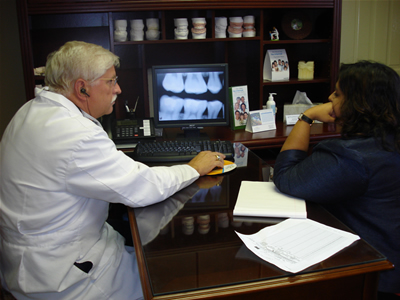 |
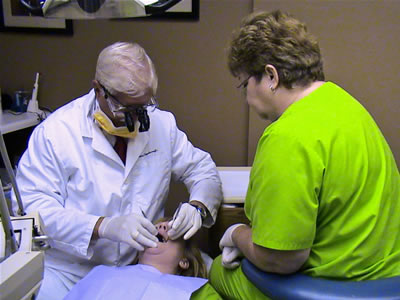 |
 |
DPBRN Practitioner-investigator Up-close and personal: Jon Holmes, DMD, MD, FACS by Dr. Andrei Barasch
Tuesday, November 18, 2008
I met Dr. Jon Holmes at a continuing education course where he presented some of his head and neck cancer surgical cases. I had heard his name mentioned during the UAB Tumor Board meetings and knew he was an Oral and Maxillofacial Surgery (OMFS) private practitioner in Birmingham who was active in oral oncology. I must admit that my initial reaction was mixed: on one hand, I was happy that dentistry made a significant claim to include malignant conditions of the maxillofacial region; on the other hand, being an academic lifer I was somewhat concerned about cancer being treated in private practice (I freely admit my bias here but will never acknowledge it if I run for elected office). It was with this ambivalence that I shook Dr. Holmes' hand and went on to learn a valuable life lesson.
Dr. Holmes and I have had significant and valuable interactions since that handshake and I want to express here my gratitude to his invaluable contributions to DPBRN study "CONDOR study of ONJ". He was invaluable to this research project, which opened the door to other planned collaborations between our group at UAB and his practice.
Dr. Holmes is originally from Mississippi and graduated from his native State's School of Dentistry Suma Cum Laude in 1993. He completed requirements for his M.D. degree and the OMFS residency at the University of Alabama at Birmingham where he served as Chief Resident in 1998-99 and continued his training as a fellow in Portland, OR. Dr. Holmes returned to Birmingham and opened his practice in the historic South Side in 2002. In his relatively short career he has amassed a disproportionate number of honors and awards including Scholastic Excellence at the UAB School of Medicine, the American College of Dentists Award and the Wallace V. Mann Award for the highest GPA.

Impressive! But what really moved me to write this article is Dr. Holmes' active pro-bono research and his academic interests. Despite the fact that a private practice has a different bottom line, Dr. Holmes perceives as his duty to use his experience and patient population to help answer the myriad of questions still plaguing the Oral Oncology field. Not only are his patients cared for at the highest level of scientific evidence, but they also become exponents of innovation and development of new knowledge.
Needless to say, we are very happy to have Dr. Holmes in the DPBRN practitioner-investigator group and are looking forward to further successful collaboration. Dr. Holmes is a prime example of the fertility of the practice-based new frontiers in dental research.
DPBRN Practitioner Highlight
Tuesday, November 18, 2008
In this issue, we are highlighting practitioner-investigator Dr. Paul Dirkes, who has participated in DPBRN Studies "Reasons for placing the first restoration on permanent tooth surfaces", "Reasons for replacement or repair of dental restorations", "Longitudinal study of dental restorations places on previously unrestored surfaces", and "Patient satisfaction with dental restorations".
Dr. Dirkes was originally a scholarship recipient of the National Health Service Corps of the U.S. Public Health Service. He spent two years active duty in Migrant Health in Illinois, then entered private practice for 21 years in Cincinnati while also in the active reserves of the Public Health Service. In 2003, he re-entered the P.H.S. but with the Indian Health Service. He was forced back to civilian status due to age limitations of the PHS but remained at the Indian Reservation as a Tribal employee. Since 2007, when all age restrictions on P.H.S. officers were lifted, he was elected to remain a civilian employee of the Poarch Creek Indians but was activated back as an Inactive Reserve Corp officer.
He joined DPBRN as clinical research has always interested him. Back in the 1980's, he was part of the International Dental Health Foundation whose focus was periodontal disease prevention and treatment. He just finished a five-year longitudinal study of the efficacy of fluoride varnish in a high risk Indian population and is currently in a five-year study of the efficacy of glass ionomer restorations in primary teeth in an Indian population.
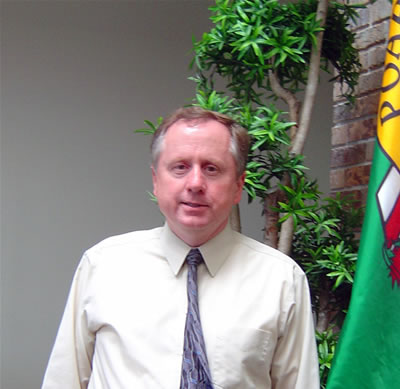 |
 |
DPBRN article in the Swedish Dental Association Newspaper
Wednesday, November 05, 2008
The Swedish Dental Association Newspaper Tandläkartidningen wrote an article regarding DPBRN in its latest issue. In it, they interview Dr. Per Påhlsson, private dentist in Malmö, Sweden and DPBRN practitioner-investigator. Please click here to read the article.
DPBRN Article in Today's FDA
Wednesday, November 05, 2008
The October 2008 issue of Today's FDA (Florida Dental Association) featured an article on the 1st Network-Wide meeting of all DPBRN practitioner-investigators in Atlanta, GA in May.Please click here to read the article.
Third annual meeting for Permanente Dental Associates practitioner-investigators
Monday, November 03, 2008
About 35 practitioner-investigators and DPBRN project staff members met Saturday October 11th, 2008 in Portland, Oregon to discuss DPBRN study results, talk about current studies, and refine future studies.
Dan Pihlstrom, DPBRN Executive Committee member and practitioner-investigator, opened the meeting by offering several reasons why doing practice-based research is a worthwhile endeavor. Gregg Gilbert, DPBRN Network Chair, shared results from the first network-wide meeting held in Atlanta, GA in May. He shared that 98% of meeting attendees rated the overall quality as "Very Good" or "Good". Perhaps more telling was that 80% of attendees indicated they would change how they treated dental caries as a result of attending the network-wide meeting. David Mosen, Senior Program Evaluation Consultant, talked about the receipt of dental care and medical outcomes for adults with diabetes. Jeff Fellows, DPBRN principal investigator, shared preliminary results from DPBRN study "Retrospective cohort study of ONJ". Although the incidence of Osteonecrosis of the Jaw (ONJ) was very low in both Kaiser Permanente Northwest and Health Partners, the data suggest a connection of ONJ with a history of oral bisphosphonate use.
Dr. Pihlstrom shared some of the findings from DPBRN studies "Assessment of caries diagnosis and caries treatment" and "Reasons for placing the first restoration on permanent tooth surfaces", as well as impressions from the network-wide meeting. He also presented several related articles from the Journal of Evidenced-Based Dentistry. Lisa Waiwaiole, DPBRN Regional Coordinator, answered questions about DPBRN study "Longitudinal study of dental restorations placed on previously unrestored surfaces" and introduced DPBRN studies "Reasons for replacement or repair of dental restorations" and "Patient satisfaction with dental restorations".
Finally Drs. Fellows and Pihlstrom closed out the meeting with a brief discussion of DPBRN study Alternative caries treatment strategies for proximal D1 lesions ("ACT-1 study on D1 lesions"). Project staff members are looking forward to additional practitioner input on how to develop and implement this important randomized clinical trial. The study will evaluate the effectiveness and cost effectiveness of non-surgical treatment of proximal carious lesions compared to surgical treatment.
Two DPBRN practitioner-investigators were recently inducted as Fellows of the American College of Dentists
Monday, November 03, 2008
Two DPBRN practitioner-investigators were inducted as Fellows in the American College of Dentists (ACD) during its annual meeting October 15-16, 2008, held this year in San Antonio, Texas. Dr. Allen Kessler, a very active DPBRN practitioner-investigator, was inducted. He is a general dentist in private practice in Fairfield, Alabama. Dr. Patrick Foy, also a very active DPBRN practitioner-investigator, including service as the Executive Committee representative for the DPBRN Minnesota region, was also inducted. He is also a general dentist in private practice, and practices in Minneapolis, Minnesota. Congratulations to them both on this honor!
The ACD is the oldest national honorary organization for dentists. Its members have exemplified excellence through outstanding leadership and exceptional contributions to dentistry and society. In response to serious problems facing the profession, the ACD was founded August 20, 1920 to elevate the standards of dentistry, to encourage graduate study, and to grant Fellowship to those who have done meritorious work. The ACD is non-profit and apolitical, and has long been regarded as the "conscience of dentistry". Its mission is to advance excellence, ethics, professionalism, and leadership in dentistry. Click here to see the ACD web site.
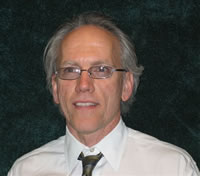 Dr. Allen Kessler |
 Dr. Patrick Foy |
FDI NIDCR-Sponsored PBRN Symposium in Stockholm, Sweden
Wednesday, October 01, 2008
The FDI World Dental Federation held its Annual World Congress meeting September 24-27, 2008 in Stockholm, Sweden. The meeting included a symposium to discuss practice-based research networks (PBRNs) and their potential to answer questions that practitioner-investigators want addressed in their daily clinical practice. The symposium focused on the conduct of oral health research in dental practice from an international perspective. Representatives from PBRNs in Europe and the United States discussed the challenges and opportunities unique to each country and network.
DPBRN was very well-represented by Dr. Per Påhlsson, DPBRN practitioner-investigator from Malmo, Sweden. He spoke about the Scandinavian experience with PBRNs. Dr. Don DeNucci, from NIDCR, spoke about the NIDCR perspective on practice-based research. Following an introduction by Dr. Jan Clarkson of the Scottish Dental Practice-Based Research Network, Dr. Van Thompson of the PEARL network provided a U.S. perspective, and Dr. Martin Tickle of the University of Manchester, England discussed lessons learned from the United Kingdom.
Click here to see the FDI World Dental Federation web site. Click here to see the web site for the FDI Annual World Congress meeting held September 24-27, 2008 in Stockholm, Sweden.
 |
 |
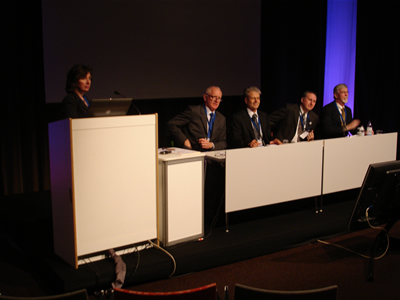 |
Minnesota Practitioner-Investigator "View Point" in ADA News
Tuesday, September 30, 2008
Dr. Pat Foy, MN practitioner-investigator and Executive Committee member, writes about dealing with patients who have passed away and his relationships with them in the September 15th issue of ADA News. Please click here to read the article.
DPBRN Enrollment Is Flourishing in Minnesota
Wednesday, September 03, 2008
Enrollment in DPBRN is thriving in the Minnesota Region. As of July 30th the total MN Region enrollment is 68 practitioner-investigators. The Minnesota region has seen an increase of more than 18 new enrollees since January 2008.
Of these members, 43 are within the HealthPartners Dental Group (39 dentists and four dental hygienists). Recently, an orientation to DPBRN has been added to the schedule for all new dentists on the HealthPartners Dental Group staff. This assures that they all know about DPBRN, and recognize it as part of the HealthPartners culture as soon as they come on board. Enrolled member Dr. David Gesko, Dental Director and a Senior Vice President of HealthPartners, echoed this growing enthusiasm in DPBRN and gave a further call for new members in a memorandum that he sent to the entire HealthPartners Dental group:
"For those of you that are not currently enrolled, I strongly encourage each of you to do so. I'd love to see us have complete enrollment in this vital activity… To assure our long-term viability and growth, we must continue to differentiate ourselves by the way we practice dentistry, and participation in the DPBRN is a critical pathway to achieve that."
Enrollment of dentist practitioner-investigators outside of the HealthPartners Dental Group is also climbing in the Minnesota region, with a current total of 25 members. Instrumental in bringing in these new practitioner-investigators is Executive Committee member Dr. Patrick Foy. The Minnesota Dental Association's Evidence-based Dentistry Task Force, of which Dr. Foy is an active member, also promotes awareness and participation in DPBRN.
Interest remains high as questions and requests for information about DPBRN continue to come in. Minnesota DPBRN staff created a "welcome to the Network" packet that is sent to all new enrollees, and are hosting in mid-September a facilitated training session for new enrollees that has to do with responsible conduct in research/human subjects. Enrollees can choose between the Responsible Conduct in Research Training from the National Institutes of Health (NIH) or the University of Miami/Collaborative Institutional Training Initiative (CITI) course.
Congratulations to all involved in continuing the success in the Minnesota region!
More items from the USAF web site about dental product evaluations
Friday, August 29, 2008
The United States Air Force Dental Investigation Service evaluates methods, techniques, procedures, equipment, and materials as identified by military dental activities and by the office of the Air Force Surgeon General. Click here to see new product evaluations that may be important to practitioners. An item in this month's edition has to do with "Contamination from Removing Personal Protective Equipment", which you may find useful.
We alerted DPBRN practitioner-investigators to the existence of this web site in our News From The Net item "Dental Product Evaluations" of Tuesday, June 14, 2005. We think that it offers practitioner-investigators practical information that will be useful to their routine clinical practice.
DPBRN Has Completed Its First Randomized Clinical Trial (RCT) - an RCT on Tobacco Cessation Counseling In Dental Practices
Wednesday, August 13, 2008
DPBRN has just completed its first randomized clinical trial. This clinical trial was called the Dental Tobacco Control (DTC) Study and was funded by the National Institute on Drug Abuse (NIDA) and the National Institute of Dental and Craniofacial Research (NIDCR). The DTC Study was based administratively at the University of Alabama at Birmingham.
Past research has shown that brief provider-delivered advice -- applied within a clinical visit -- can be effective in increasing tobacco cessation. Dentists, dental hygienists, and other dental office staff are in a unique position to advise patients because of the frequency of dental patient appointments and because the effects of oral cancer and tobacco use can be so readily seen in a routine dental exam. The DTC Study was a randomized clinical trial of an internet-delivered intervention that encouraged and provided tools to dentists and dental providers from DPBRN to discuss tobacco use with their patients.
A total of 190 practices participated. Dentists and dental staff were provided a website that comprised educational cases, patient education and practice tools, a forum for chatting with other dentists, opportunities to ask questions, and a regular update of the literature regarding dental tobacco control.
To evaluate the intervention, patients and providers were surveyed at baseline and at three separate follow-up periods. Practices who received the intervention website showed improvement on asking their patients whether they smoked cigarettes, cigars, or used smokeless tobacco and advising those who used tobacco to quit. Compared to baseline, patients from the intervention practices reported being asked about tobacco use more and advised to quit more than the control group. More detail is provided in two DPBRN publications, which are listed in the "Publications" part of the DPBRN web site. Additionally, more detail will be provided in a later DPBRN quarterly newsletter.
Now that the project's data collection period has concluded, we can open this educational opportunity to all providers in DPBRN. The website is located at www.oralcancerprevention.org. We hope that you will find the web site informative and useful in helping you counsel your patients on tobacco cessation – the DTC practices did.
The American Dental Association web site also has a link to our Oral Cancer Prevention web site. It is listed under the "University-supported continuing education and office tobacco cessation interventions" part of the section entitled "For Dental Professionals...". This is in the "Additional Resources" section on its Smoking Cessation page. To see that link click here.
Summer 2008 DPBRN Newsletter
Monday, July 28, 2008
The Summer 2008 DPBRN Newsletter has been mailed out. Please click here to view the newsletter.
DPBRN presentation at the annual meeting of the Academy of General Dentistry
Wednesday, July 23, 2008
DPBRN representatives gave a symposium July 18, 2008 on PBRN research at the annual meeting of the American Academy of General Dentistry. This year's national conference was held in Orlando, FL. The AGD web site is located at www.agd.org.
In celebration of its 60th anniversary, the U.S. National Institute of Dental and Craniofacial Research sponsored the PBRN symposium. Dr. Donald DeNucci of NIDCR gave a presentation entitled "NIDCR-sponsored Practice-Based Research Networks (PBRNs): designed to gather 'real-world' evidence for the prevention and treatment of oral diseases". Dr. Gregg Gilbert, DPBRN Network Chair, spoke on "PBRNs: the DPBRN experience".
This was followed by the highlight of the symposium, two presentations given by DPBRN practitioner-investigators. Dr. Martha Wallace, DPBRN practitioner-investigator in Birmingham, AL and DPBRN Executive Committee member, spoke on "DPBRN membership: impact on my practice" and Dr. Paul Benjamin, DPBRN practitioner-investigator in Miami, FL and DPBRN Executive Committee member, spoke on "Conducting research in my practice: lessons learned". An active DPBRN practitioner-investigator and AGD member, Dr. Stuart Dropkin, of Winter Park, FL, was appointed by AGD to serve as the symposium's Course Manager. The symposium led to several questions from the audience, followed by an engaging discussion. Audience members came to understand the unique opportunities afforded by PBRNs to contribute to answering questions that practitioners face daily in the routine care of their patients, and how PBRNs can lead to improvement in clinical practice in a wide range of clinical settings.
This also led to discussion between audience members and the practitioner-investigator presenters about how best to design research studies for the PBRN setting – a discussion that probably would never have taken place before the NIDCR-funded PBRN initiative began!
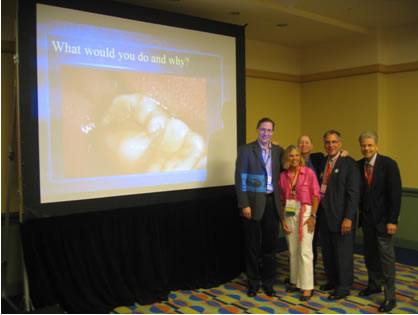 |
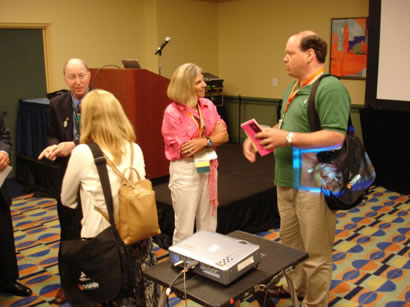 |
 |
 |
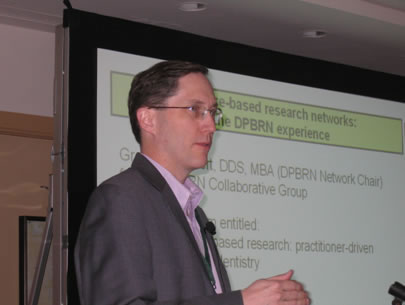 |
 |
 |
DPBRN was well-represented at the IADR research meeting in Toronto, again with major leadership roles by practitioner-investigators
Friday, July 11, 2008
DPBRN continues its emphasis on disseminating findings from its studies and demonstrating that our practitioner-investigators can exert very effective leadership roles in this activity. DPBRN was well-represented at the annual meeting of the International Association for Dental Research, held in Toronto, Canada July 2-5, 2008. We had a total of seven presentations, three of which were given as oral presentations, and four of which were given as posters.
Two DPBRN practitioner-investigators presented. Dr. Louis Roque of Vero Beach, FL presented the poster entitled "Differences in providing individualized caries prevention treatment across Dental PBRN". Dr. Craig Ajmo of Dunedin, FL presented the poster entitled "Assessment of primary caries lesion depths in Dental PBRN practices".
Several presentations were also given by DPBRN faculty and staff from the University of Florida. Dr. Joseph Riley gave a presentation entitled "Regional Differences in Child Caries Prevention", as did Dr. Marcelle Nascimento, whose presentation was entitled "Reasons for Placement of First Restorations by Dental PBRN Clinicians". Ms. Deborah McEdward presented the poster entitled "Resources for Dentists to Engage Colleagues in the Dental PBRN". Dr. Valeria Gordan, Principal Investigator for DPBRN studies "Assessment of caries diagnosis and caries treatment" and "Reasons for placing the first restoration on previously unrestored tooth surfaces", presented the poster entitled "Caries Prevention Methods for Adult Patients among Dental PBRN Dentists".
Dr. Andrei Barasch from the University of Alabama at Birmingham gave a presentation entitled "Osteonecrosis of the Jaw in Two Dental PBRN Health Plans".
Thanks to all the DPBRN practitioner-investigators, faculty, and staff involved in these projects for all their hard work in making this meeting yet another great success for DPBRN. Click here for the full list of presentations.
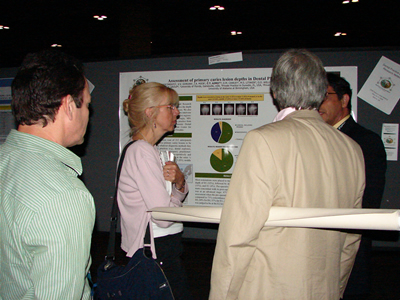 |
 |
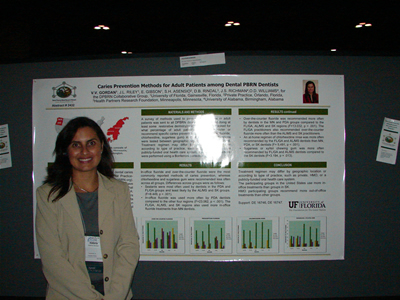 |
ADA implements "Tell Us What You Think" on its website
Sunday, July 06, 2008
The ADA recently implemented a section on its website called "Tell Us What You Think". The purpose of this section is to post various questions about dental materials or other topics and are posted every 2 to 3 months on this page. Input from DPBRN practitioners would greatly assist the effort to understand dentists' needs and opinions on a variety of topics involving dental standards and materials testing. Click here to view the most recent question.
Alabama Practitioner-Investigator interview in UAB Dentistry Magazine
Tuesday, June 24, 2008
Dr. Bruce Cunningham, practitioner-investigator from Jacksonville, AL gave an interview for the UAB Dentistry Magazine where he spoke about his career, his role as past president of the Alumni Association, and his membership in DPBRN. Please click here to read the article.
DPBRN Article in Today's FDA
Tuesday, June 24, 2008
The May 2008 issue of Today's FDA (Florida Dental Association) featured an article on the current and future studies in DPBRN. The article also discusses the role of the Florida practitioner-investigators in the Executive Committee. Dr. Manuel Serra-Jovenich of Miami served from 2005-2008 and Dr. Paul Benjamin of Miami is currently serving from 2008-2011. Please click here to read the article.
DPBRN Network-Wide Meeting
Friday, June 20, 2008
DPBRN held its first network-wide meeting May 15th-May 17th, 2008 at the Intercontinental Hotel in Atlanta, Georgia. Previously, annual meetings of DPBRN practitioner-investigators had been held by each of DPBRN's five regions, instead of having practitioner-investigators from all five regions in attendance at the same meeting at the same time. This unprecedented meeting brought together practitioner-investigators from all five DPBRN regions. With more than 140 DPBRN practitioner-investigators from the United States (Alabama, Florida, Georgia, Minnesota, Mississippi, Oregon, and Washington) and Scandinavia (Denmark, Norway, and Sweden) in attendance, all DPBRN regions were well-represented.
Before the meeting, each practitioner received in the mail his or her own personalized results from the DPBRN study "Assessment of caries diagnosis and caries treatment" questionnaire, along with results from all the practitioner-investigators. This allowed each practitioner-investigator to compare his or her own answers to what all the other practitioner-investigators in each region had responded. Network-wide results from DPBRN study "Reasons for placing the first restoration on permanent tooth surfaces" were also provided to all attendees at the meeting. Results from both studies were then used during "breakout sessions". These breakout sessions were discussion groups in which representatives from all DPBRN regions were divided into discussion groups of 8-10 practitioner-investigators. Lively discussions were had in all the breakout sessions about the similarities and differences among the five DPBRN regions. Discussion topics included: (1) which results practitioner-investigators found the most interesting and surprising; (2) which results were the most applicable to DPBRN patients; (3) which differences across DPBRN regions were due to different dental care systems in the DPBRN regions, differences in how dentists are trained, differences in patient populations. Practitioner-investigators also discussed how these results may affect how they practice in the future and how can these results lead to improving dental care. Both the U.S. and Scandinavian practitioners learned valuable information from these breakout groups and enjoyed sharing ideas and experiences with each other. At the end of the breakout sessions, certain practitioner-investigators (Dr. Jeffrey Houtz, practitioner-investigator from PDA; Dr. Louis Roque, practitioner-investigator from FL; Dr. Barry Goodspeed, practitioner-investigator from AL; and Dr. George Morarasu, practitioner-investigator from MN) presented to the meeting at large all the findings from the breakout sessions, which proved to be very beneficial to all DPBRN members.
Most of the speakers at the meeting were DPBRN practitioner-investigators. Click here to view the full list of speakers and full meeting agenda. For example, Dr. Craig Amundson (practitioner-investigator from HP) provided information on the characteristics of the HealthPartners dental care system. Dr. John Snyder (practitioner-investigator from PDA) presented information on the Permanente Dental Associates dental care system. Dr. Ola Johan Basmo (practitioner-investigator from Norway) provided information on the Scandinavian dental care system. Dr. Martha Wallace-Dawson (practitioner-investigator from Birmingham, AL) spoke about the characteristics of the private practice dental care systems in AL, FL, GA, MN, and MS and how they affect dental care, and in a presentation later in the meeting, discussed her experiences in doing a randomized clinical trial. Dr. Paul Benjamin (practitioner-investigator from Miami, FL and DPBRN Executive Committee Member) gave an overview of DPBRN study "Assesment of caries diagnosis and caries treatment". Dr. Craig Ajmo (practitioner-investigator from Dunedin, FL) discussed preliminary results from DPBRN study "Reasons for placing the first restoration on permanent tooth surfaces". Dr. Dan Pihlstrom (practitioner-investigator in the PDA region and DPBRN Executive Committee member) presented on the importance of translating research into practice, pointing out that it can take as many as 17 years to translate traditional research into daily clinical practice, but that results from DPBRN studies should speed up this process. Dr. Pat Foy (practitioner-investigator from the MN region and DPBRN Executive Committee Member) concluded the meeting with how DPBRN practitioners can engage other practitioners in their community through local, state, national, and international presentations.
At the beginning and end of the meeting, practitioners filled out a questionnaire regarding the impact of practice-based research in their daily clinical practices. Practitioner-investigators very much enjoyed meeting other DPBRN practitioner-investigators from across the globe and enjoyed interacting with each other throughout the meeting. Thank you to all who attended in making this a very successful meeting! Attending practitioner-investigators look forward to using the DPBRN results and interactions at the meeting to improve dental care for their patients.
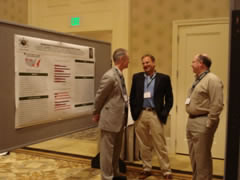 |
 |
 |
 |
 |
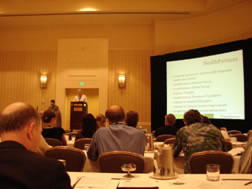 |
 |
 |
 |
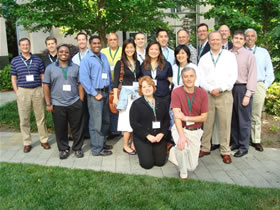 |
Testimonials from the DPBRN Network-Wide Meeting in Atlanta
Dr. Cyrus Lee, PDA: "The Atlanta DPBRN Network-Wide meeting reaffirmed to me that PDA truly is at the forefront of defining and delivering evidence-based dental care. I feel more confident about the effectiveness of sealants in treating early occlusal caries, and whether to intervene surgically or medically when it comes to interproximal carious lesions. I also realize, however, that there is a lot of information we don't have, especially on the outcomes of different treatment strategies. So really, the biggest change is realizing the importance of incorporating PBRN studies into my practice."
Dr. Dorthe Oleson, Denmark: "It was a great and interesting meeting - very rewarding to discuss our treatment procedures with other dentists. It stated how important research is - we treat differently depending on the theories and assurances of the University - that's why it is so important, that we all contribute so we can all improve. It will be interesting if we can affect each others' treatment procedures - when our health systems are different."
Dr. Hakan Flink, Sweden: "Finally a network who is concerned about the development of odontology. Looking forward to an interesting development."
Dr. David Gesko, MN: "Being able to learn perspectives from other portions of the country - and in this case world - allows growth and excitement for change! DPBRN allows a perfect forum to advance our profession and improve the health of those we serve."
Dr. Bob Maland, MN: "It has been very gratifying to be a part of DPBRN. The meeting in Atlanta was a great opportunity to share and compare philosophies of caries management with dentists from Scandinavia and from other sections of the US. I feel participation in DPBRN gives us a chance to give something back to dentistry by participating in clinical research which has the potential to change the way we practice."
Dr. Robin Yardic, MN: "I was very proud to be a representative of HealthPartners attending the DPBRN conference. I was able to share information about risk assessments and interventions that showed HP's commitment to dealing w/ the caries process, and realize how far ahead we are of other practices. It was very interesting meeting the Scandinavian dentists who have an even more conservative approach to restorative dentistry than we have. It was great meeting with other practitioners and researchers who are involved in the same goals we are at HP."
Dr. Vince Riehm, MN: "The 2008 Atlanta DPBRN meeting was well planned and carried out. It provided ample time for taking in new information and for each of us to share our own observations with others. I picked up some good information and I would encourage other dentists, who haven't yet gotten involved in DPBRN, to sign up. DPBRN is good for our patients and our profession."
Dr. Mike Bauer, MN: "I found the Atlanta meeting engaging, challenging, and rewarding. I am encouraged by the enthusiasm of dentists in providing evidence-based solutions to every day practice decisions. I would like to have more regular meetings with dentists from the US and Scandinavia. We should try to bring all our colleagues into the DPBRN."
Dr. Don Worley, MN: "The DPBRN meeting in Atlanta was an eye opener. To have practicing dentists from all over the country and Scandinavia sharing their treatment philosophy was a unique experience."
Dr. Thomas Walker, AL: "It was very interesting and informative meeting the many dentists from various regions of the world at the recent meeting. The philosophies of treatment were as diverse as the doctors that related them. The conference impressed upon me that what appears as a simple restorative procedure as I had been taught was not viewed the same outside my community of dentists. It also planted the seeds that perhaps this research may be the standardization of treatment that may follow. Many items of interest to ponder however."
Dr. Jocelyn McClelland, AL: "The DPBRN meeting had a large impact on my practice. I have attended many continuing education programs in my 20 years of practicing dentistry, but this was the first one that I actually implemented knowledge gained on the weekend into my practice on Monday morning! It really made me appreciate being a part of such an important project."
Dr. Edward Bozeman, MS: "On returning from the Atlanta DPBRN Meeting, I decided to make a real effort to apply what I learned from all the presentations. Over the first few days back in the office I saw several patients who had E1 proximal surface lesions that I decided to monitor instead of treat. Each of these patients has low caries risk factors. One interesting case involved a patient who had not been in for re-care in three years. At his last re-care visit we took BWX radiographs and found a proximal lesion that had just reached E2 status. He failed to return for his appointment to treat this lesion, and when I saw his name on our daily schedule for re-care I feared this tooth would now be non-restorable. To my surprise his BWX update revealed no change in radiographic appearance of the lesion. This time I chose to monitor the lesion rather than restore because of what I learned from the presentations at our meeting. Hopefully this patient will continue his good home care practices, and we will find this lesion to remain inactive."
Dr. Michael Mann, AL: "The Atlanta meeting was so different because doctors from such diverse backgrounds could sit and discuss the best treatment for our patients without having 'something to sell'. It is always a challenge to hear that someone is doing something differently from the way you think it should be. However, it forces you to examine why you do it a certain way and then consider whether there is a better way. I am definitely looking at, discussing, and treating shallow caries differently than before. I'm already looking forward to the next meeting."
Dr. Pat Foy, MN: "The meeting in Atlanta was well-designed and helped solidify my goal of a credible network that reflects a good cross-section of a diverse group of practice-styles. I honestly had the feeling that we all entered Atlanta with our personal chip on our shoulders. That chip represented our individual practice styles and philosophies. Quickly those personal chips melted away and the open-minded discussion ensued. As a result we left not only better informed, but more receptive to alternative treatment modalities and treatment options. I am convinced that this is the answer to filling the void that exists in Evidence-Based Dentistry. I left proud to be part of an international solution to dental care that honestly focused on what was best for the patient regardless of the potential economic ramifications. Thanks for your hard work."
Personalized results of DPBRN study "Assessment of caries diagnosis and caries treatment" are now available
Monday, June 02, 2008
For practitioners who completed the DPBRN study, "Assessment of Caries Diagnosis and Treatment", the personalized results are now available and are currently being mailed to each practitioner.
This study focused on methods that DPBRN dentists use to diagnose and treat caries lesions. It had 3 aims which quantified the percentages of DPBRN dentists who report: 1) using selected methods for caries diagnosis; 2) using a caries risk assessment protocol of any variety; 3) intervening surgically at caries stages E1, E2, D1, D2, or D3.
As you know, DPBRN comprises 5 regions: AL/MS: Alabama/Mississippi; FL/GA: Florida/Georgia; MN: Minnesota which included dentists employed by HealthPartners; PDA: Permanente Dental Associates in cooperation with the Kaiser Permanente Center for Health Research; and SK: Denmark, Norway, and Sweden.
The aims were accomplished by sending a questionnaire to all DPBRN dentists from all regions who perform restorative dentistry in their practices (n=915). A total of 532 DPBRN members returned completed surveys.
The results show significant variation among the different DPBRN regions in various aspects: techniques used to diagnose dental caries, use of caries risk assessment, treatment options chosen by dentists, and the decision to intervene surgically in the caries process. Additionally, the use of caries risk assessment varied substantially by dentists' year of graduation of dental school. The treatment options used also varied according to the specific case scenario. And finally, the decision to intervene surgically varied by the depth of the caries lesion and patient's caries risk.
Please click here to compare your results to those of others network-wide.
During the DPBRN Network-wide meeting in Atlanta, practitioners participated in breakout groups with a representative from each region to discuss the similarities and differences in their responses. Please consider ways that these results can have an impact in your daily practice and let us know of your insights by e-mailing the Principal Investigator of this study, Dr. Valeria Gordan, at [email protected]. We hope that you find these results to be interesting. Thank you for your participation!DPBRN members attend the 3rd International Conference on Evidence-Based Dentistry
Wednesday, May 07, 2008
The 3rd International Conference on Evidence-Based Dentistry followed the Champion conference on Sunday, May 4, 2008. Dr. Patrick Foy, DPBRN Minnesota Region Executive Committee member, joined other Minnesota DPBRN members and Minnesota colleagues for the Sunday meeting, which explored the dissemination of evidence-based information with an emphasis on Clinical Decision Support or CDS. Speakers included Janet Clarkson from the Cochrane Library, Philippe Hujoel and Michael Newman of the Journal of Evidence-Based Dental Practice, and Robert Ahlstrom, ADA National Health Information Infrastructure (NHII) Task Force member.
DPBRN Presentation at the National Oral Health Conference
Tuesday, May 06, 2008
DPBRN representatives gave a symposium April 30, 2008 on PBRN research at the annual National Oral Health Conference. This year's national conference was held in Miami, FL. The National Oral Health Conference is sponsored annually by the Association of State and Territorial Dental Directors, the American Association of Public Health Dentistry, the U.S. Health Resources and Services Administration, and the U.S. Centers for Disease Control and Prevention.
In celebration of its 60th anniversary, the U.S. National Institute of Dental and Craniofacial Research sponsored the PBRN symposium. Dr. Donald DeNucci of NIDCR gave a presentation entitled "NIDCR-sponsored Practice-Based Research Networks (PBRNs): designed to gather 'real-world' evidence for the prevention and treatment of oral diseases". Dr. Gregg Gilbert, DPBRN Network Chair spoke on "PBRNs: the DPBRN experience".
This was followed by the highlight of the symposium, two presentations given by DPBRN practitioner-investigators. Dr. Martha Wallace, DPBRN practitioner-investigator in Birmingham, AL and DPBRN Executive Committee member, spoke on "DPBRN membership: impact on my practice" and Dr. Paul Benjamin, DPBRN practitioner-investigator in Miami, FL and DPBRN Executive Committee member, spoke on "Conducting research in my practice: lessons learned".
The symposium was well-attended and led to numerous interesting questions from the audience, followed by an engaging discussion. Audience members came to understand the unique opportunities afforded by PBRNs to contribute to answering questions that practitioners face daily in the routine care of their patients, and how PBRNs can lead to improvement in clinical practice in a wide range of clinical settings.
DPBRN presents to the NIDCR PBRN National Monitoring Committee
Tuesday, May 06, 2008
When it funded three dental PBRNs in 2005, NIDCR formed the PBRN National Monitoring Committee. This committee meets twice each year to review progress of the PBRNs and to provide feedback to the Principal Investigators (Network Chair and Coordinating Center) and the NIDCR PBRN Program Director. The Committee includes representatives from several stakeholder groups, including professional organizations (e.g., the American Dental Association), a public advocacy member, and specific content experts, such as two directors of medical PBRNs and an expert in dental informatics. For DPBRN, the Monitoring Committee functions as an external advisory board. DPBRN submitted a comprehensive written progress report to the committee before the meeting.
The committee meeting was held April 25, 2008 at the National Institutes of Health in Bethesda, Maryland. DPBRN was represented by Dr. Paul Benjamin, practitioner-investigator representative, Dr. Gregg Gilbert, DPBRN Network Chair, and Dr. Dale Williams, Principal Investigator of the DPBRN Coordinating Center. Dr. Benjamin is in full-time private practice in Miami, Florida and is a member of the DPBRN Executive Committee.
Drs. Gilbert and Williams gave a presentation entitled "DPBRN progress report". Dr. Benjamin gave a presentation on "DPBRN: perspectives of the practitioner".
The Monitoring Committee was pleased with the progress of all the PBRNs and made some specific recommendations to maximize the long-term impact of this initiative.
DPBRN actively participated in the ADA-sponsored Evidence-Based Dentistry Champions Conference
Tuesday, May 06, 2008
An Evidence-Based Dentistry Champion Conference was held at the American Dental Association (ADA) headquarters in Chicago, IL on May 2-3, 2008. The conference -- the first of its kind -- was jointly sponsored by the ADA and the Journal of Evidence-Based Dental Practice. The goal of the conference was to promote dentists serving as local champions for applying an evidence-based approach to patient treatment and prevention of diseases. The conference was attended by dentists in private practice from across the country, as well as some faculty from dental schools. Two practitioner-investigators from the other NIDCR-funded PBRNs presented their perspectives and ideas at the conference. Dr. Jane Gillette of the Northwest PRECEDENT network gave a talk entitled "Making evidence-based dentistry work in practice" and Dr. Kenneth Goldberg of the PEARL network gave a presentation about the role of the dental team in implementing evidence-based dentistry.
PBRN representatives were invited to attend, and certain DPBRN practitioner-investigators and staff did so. Pictured from left to right are Ms. Merry Jo Thoele, Regional Coordinator for the MN region, Dr. Bill Rush, Investigator at the HealthPartners Research Foundation, Dr. Donald Worley, DPBRN practitioner-investigator in the MN region, Dr. Brad Rindal, Principal Investigator of the MN region and DPBRN practitioner-investigator, Dr. Gregg Gilbert, DPBRN Network Chair, Dr. Gary Anderson, DPBRN practitioner-investigator in the MN region who also gave a presentation at the meeting about dissemination tools and resources, Dr. Paul Quiram, DPBRN practitioner in the MN region, and Dr. Paul Benjamin, DPBRN Executive Committee member from the DPBRN FL/GA region.
The ADA has established an evidence-based dentistry (EBD) resource center at its web page. Click here to visit the EBD website. The EBD web site currently includes a searchable directory of systemic reviews, a glossary of terms and additional EBD resources. This site is an interim resource as the ADA develops an enhanced EBD Web site with grant support from the National Library of Medicine and NIDCR. An important part of the new web site content will be critical summaries of systematic reviews and additional EBD resources. The ADA is currently conducting a search for dentists who may want to become ADA Evidence Reviewers. Evidence Reviewers will develop critical summaries of systematic reviews on dental and oral health care topics. For information about this year's and future evidence-based dentistry champion conferences click here.
Following the Champion Conference some DPBRN members remained and also attended the 3rd International Conference on Evidence-Based Dentistry on Sunday, May 4, which explored the dissemination of evidence-based information with an emphasis on Clinical Decision Support (CDS).
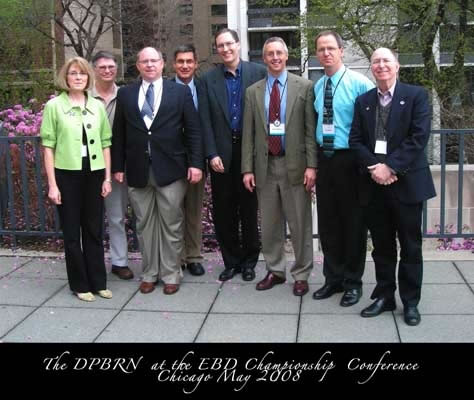
Featured article in the Colgate Oral Care Report
Monday, April 21, 2008
The April 2008 Colgate Oral Care Report features an article on dental practice-based research networks. Please click here to view the document. Click here to visit the Colgate website.
DPBRN posters and presentations AADR meeting
Monday, April 21, 2008
DPBRN was well-represented at the 37th Annual Meeting of the American Association for Dental Research in Dallas, TX April 2-5 2008. DPBRN had multiple abstracts, given as oral presentations and posters, which garnered a lot of interest in our network. Congratulations to all the presenters for a job well done! Click here to view the abstract list. Click on the thumbnails to view the photos.
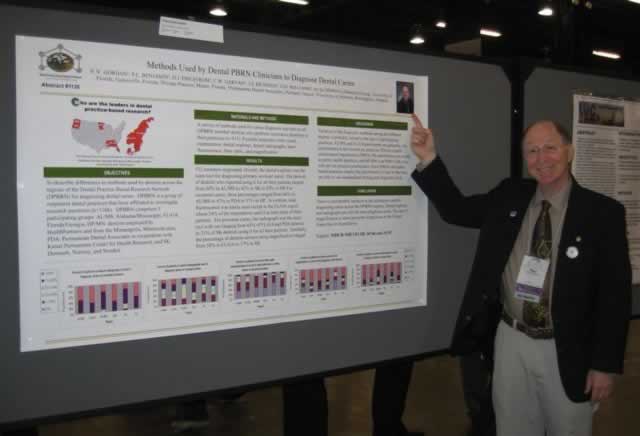 |
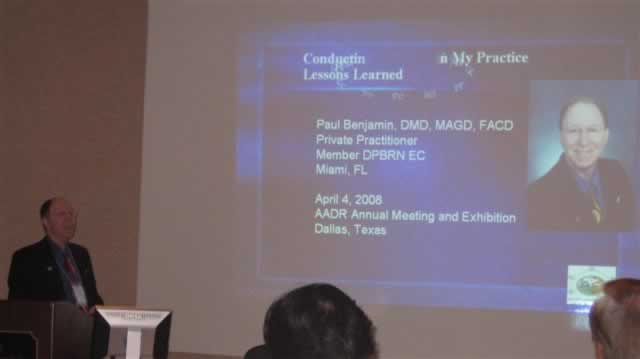 |
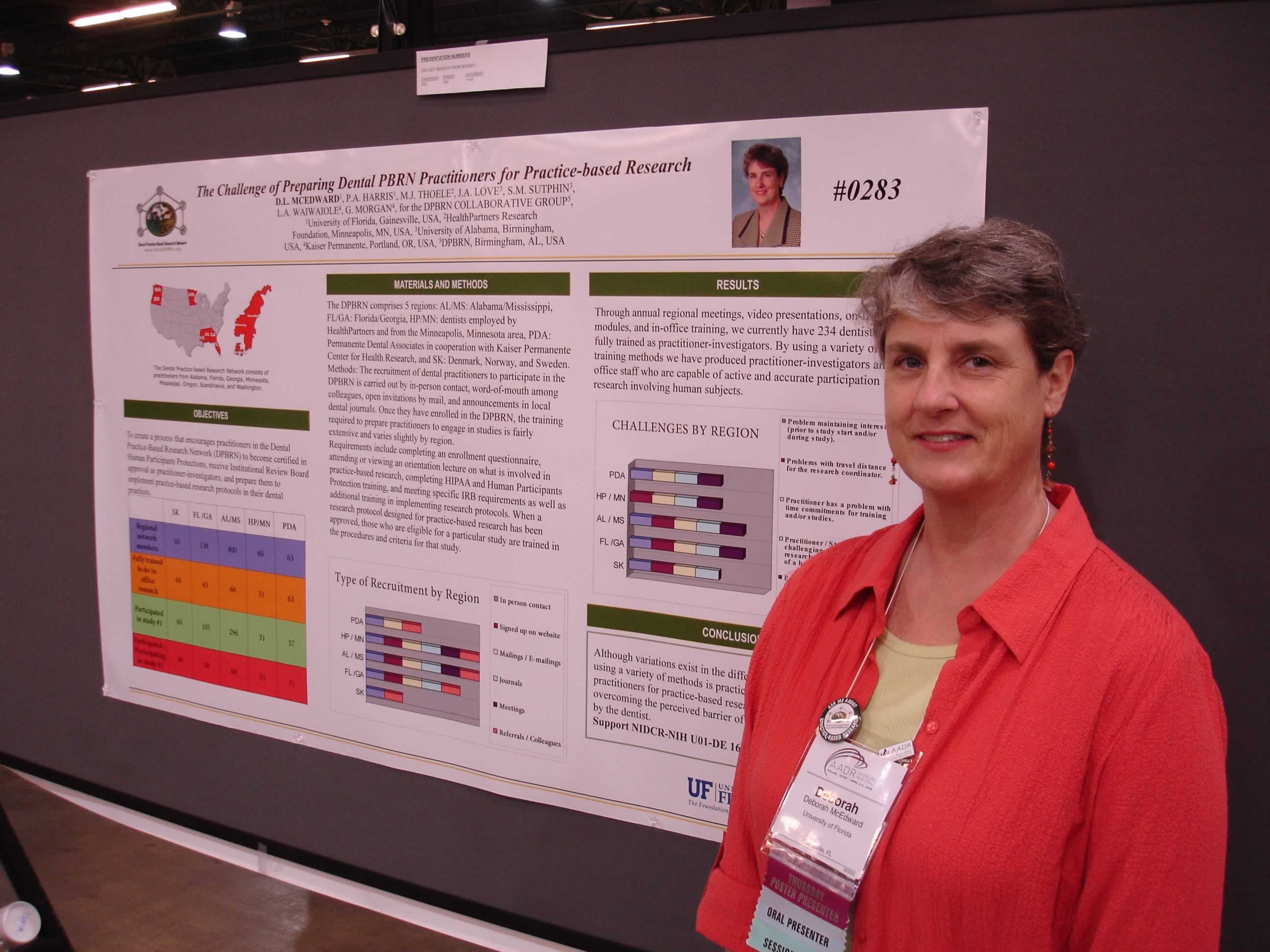 |
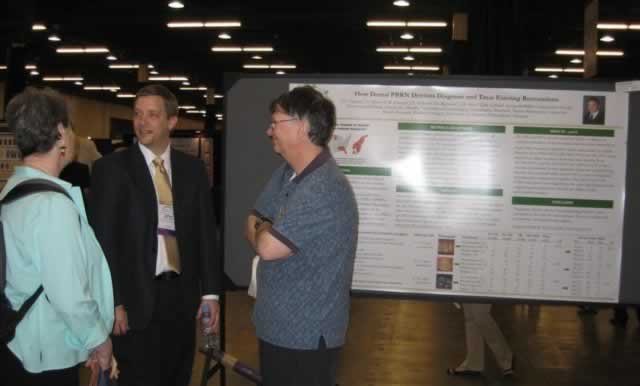 |
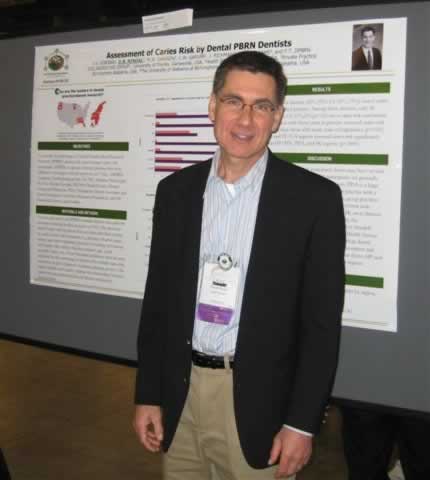 |
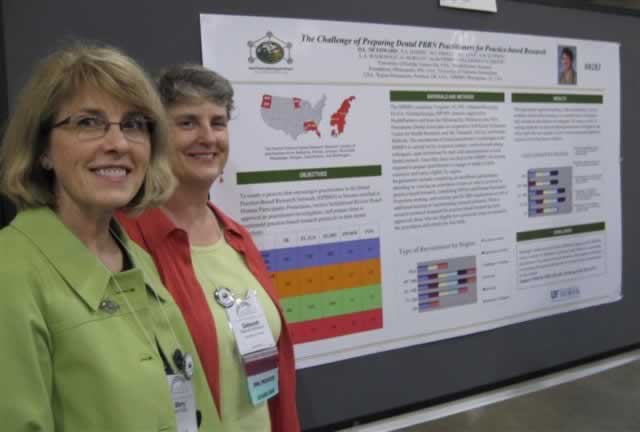 |
Spring 2008 Newsletter
Friday, March 28, 2008
The Spring 2008 DPBRN Newsletter will be mailed out this week. Please click here to view the newsletter.
Alumni Weekend for the School of Dentistry at the University of Alabama at Birmingham
Monday, March 10, 2008
Jackie Love and Sherry Sutphin, Research Assistants and DPBRN Regional Coordinators, exhibited at the School of Dentistry at the University of Alabama at Birmingham Alumni Weekend February 1st, 2008 at the Wynfrey Hotel in Birmingham, AL. They displayed information and answered questions about upcoming DPBRN research studies, which are: "Reasons for Replacement or Repair of Dental Restorations", "Patient Satisfaction with Dental Restorations", "Longitudinal Study of Dental Restorations", and "Prevalence of Questionable Occlusal Caries Lesions". More than 1,000 people attended.
 |
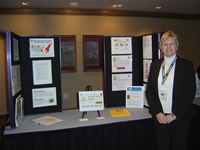 |
The U.S. Food and Drug Administration (FDA) has posted information about the risk of serious allergic reactions in users of denture cleansers
Tuesday, March 04, 2008
The Food and Drug Administration (FDA) has posted information about the risk of serious allergic reactions in users of denture cleansers. The FDA has received at least 73 reports of adverse events, including at least one death, related to the use of denture cleansers. These adverse events, including abdominal pain, vomiting, seizures, hypotension and difficulty breathing, have occurred both when the product has been used properly as well as from improper use. These events can occur soon after first use or after years of use. The FDA believes that the ingredient responsible for these reactions is persulfate, a known allergen. Persulfates are used in most denture cleansers to help clean and bleach the dentures. The FDA has provided specific recommendations for dental health-care professionals and an "Advice for Patients" document. Please click here to view the document. Click here to visit the FDA website.
Watch for Evidence-Based Clinical Recommendations on Dental Sealants in JADA
Tuesday, March 04, 2008
In a 2004 survey, we asked members to tell us what clinical questions they would like answered through an evidence-based process. The effectiveness of dental sealants for managing or arresting carious lesions in permanent teeth was high on the list. To address this need, the ADA will publish evidence-based clinical recommendations for the use of pit and fissure sealants in the March 2008 issue of The Journal of the American Dental Association (JADA). The recommendations will also be posted on ADA.org.
The ADA convened an expert panel in November 2006 to assess the scientific evidence and develop these recommendations. The recommendations are a tool to help dentists with their clinical decision-making. They are not a substitute for the dentist’s professional judgment or the patient’s needs and preferences. The primary conclusions derived from the evidence support certain things that dentists have known all along:
• dental sealants are effective at preventing dental decay; and
• both children and adults can benefit from the use of sealants.
Other evidence-based conclusions may be less familiar to dentists. These include:
• sealants can stop non-cavitated (incipient) lesions from progressing; and
• in most cases, removing tooth structure before placing a sealant is not recommended.
The evidence also shows that sealants are effective as long as they are applied properly, monitored and replaced when needed. Not surprisingly, the retention of sealants is significantly enhanced when a four-handed technique is used.
The recommendations will be published in the March 2008 JADA with an executive summary that dentists can use as a quick reference. The full report includes information on:
• the process the ADA followed to develop these evidence-based clinical recommendations;
• the system for classifying the strength of the recommendations based on the supporting evidence; and
• helpful clinical recommendation summary charts.
The same issue of JADA will include For the Dental Patient, a feature designed to help dentists talk with their patients about pit and fissure sealants. Click here to visit the ADA website.
Two practitioner-investigator representatives from the AL/MS region elected to the DPBRN Executive Committee
Tuesday, February 05, 2008
After counting ballots cast by 227 DPBRN practitioner-investigators from the AL/MS region, two practitioner-investigator representatives have been elected to the DPBRN Executive Committee.
 Dr. Martha Wallace |
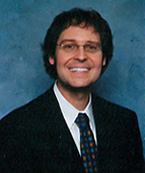 Dr. Gerald Anderson |
Dr. Martha Wallace of Birmingham, AL, and Dr. Gerald Anderson of Selma, AL, have been elected to represent the AL/MS region. Dr. Wallace will serve as the member-at-large representative for the combined AL/MS and FL/GA regions. Dr. Anderson will serve as the representative from the AL/MS region. Their three-year terms will run from February 2008-February 2011. Both Drs. Anderson and Wallace have been active DPBRN practitioner-investigators, and now increase their service further in these important elected positions.
Dr. Wallace served as an appointed representative on the Executive Committee from 2005-2008, as did Dr. David Cawley of Montgomery, AL. Dr. Cawley served in an expert fashion and DPBRN and the AL/MS region are very grateful for his service! At its November 2007 meeting, the DPBRN Executive Committee approved having a total of 6 practitioner-investigator representatives. There will be one practitioner-investigator from each of DPBRN’s regions, for a total of 5 practitioner-investigators, plus one practitioner-investigator "member-at-large" who represents the southeast region (combined regions of AL/MS and FL/GA), to make for a total of 6 practitioner-investigator members on the EC. The first 3-year term of the southeast representative is filled by a practitioner-investigator from the AL/MS region, followed by the next 3-year term being occupied by a practitioner-investigator from the FL/GA region. Congratulations, Drs. Anderson and Wallace!
Winter 2008 DPBRN Newsletter
Wednesday, January 30, 2008
The Winter 2008 DPBRN Newsletter will be mailed out this week. Please click here to view the newsletter.
DPBRN Presentation at the Birmingham (Alabama) Pediatric Dentistry Association
Wednesday, January 16, 2008
On January 15, 2008, Dr. Janice Jackson, a DPBRN practitioner-investigator and pediatric dentist who completed both DPBRN studies "Caries diagnosis and caries treatment" and and "Reasons for placing teh first restoration on permanent tooth surfaces", presented results from "Assessment of Caries Diagnosis and Caries Treatment" and then discussed her rewarding experiences with doing DPBRN study "Reasons for placing the first restoration on permanent tooth surfaces". Dr. Jackson encouraged all attendees at the meeting to enroll in DPBRN because doing so will help improve their clinical practice and make it more rewarding and appreciated by their patients.
Dr. Gregg Gilbert, DPBRN Network Chair, gave a presentation entitled "Real-world research in private practice" and discussed the goals and the many accomplishments of DPBRN so far. He also spoke about the benefits to participating in DPBRN as reported by DPBRN practitioner-investigators themselves. Sherry Sutphin, DPBRN Regional Coordinator, presented a display with DPBRN information for attending Pediatric dentists.
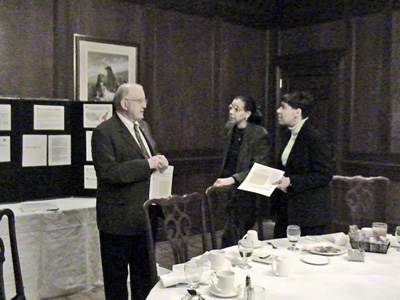
Drs. Donald Englebert, Janice Jackson, and Kimberly Carr discuss the DPBRN.
The January 2008 edition of JADA has published two articles that address the issue of bisphosphonate-associated osteonecrosis of the jaws (ONJ).
Friday, January 11, 2008
The study by Cartsos et al used a retrospective review to identify osteoporosis and specific cancer patients and divide them into bisphosphonate (BP) exposed and non-exposed patients. Results showed that both osteoporosis and cancer patients treated with IVBP had a significantly higher number of inflammatory conditions of the jaws and higher number of surgical procedures. Osteoporosis patients treated with oral BP had a significantly lower number of inflammatory jaw conditions. All other analyses showed no statistical differences. The authors concluded that IVBP constitutes a risk for ONJ while oral BP may be protective.
This study has significant limitations, including a retrospective design and use of surrogate markers for ONJ. The authors also assume that all patients who were prescribed oral BP were compliant with their treatment, which is contrary to other published results. No effort was made in this study to confirm claims data against medical charts. It is also highly unlikely that cancer patients and osteoporosis patients treated with highly different amounts of IVBP will have the same association with ONJ. These findings contradict previous reports. Due to copyright restraints, only the abstract can be viewed. Click here to view the abstract on the PubMed website.
The second article was sponsored by NOVARTIS (the maker of zoledronic acid). These are results of a study previously published elsewhere, which did not have ONJ as one of its studied outcomes. Osteoporosis patients were treated with 5mg zoledronic acid IV yearly or placebo. About half of the patients received two drug administrations while the other half got all three doses during the 3 year study duration. The main study outcome was the number of bone fractures, which was significantly lower in the BP treated group. A review of the adverse effects uncovered one ONJ case in the BP-treated group and one in the control group. The authors concluded that there is no increased risk of ONJ from 5mg zoledronic acid IV administered yearly.
The limitations here are: no information on dental treatment is presented and the patients were followed for a very brief period of time. Given the frequency of ONJ reported in the literature for osteoporosis patients and the average time to development of jaw necrosis in this group, two to three doses of drug would not be expected to produce significant results. These findings contradict results published by Cartsos et al in the article discussed above. Due to copyright restraints, only the abstract can be viewed. Click here to view the abstract on the PubMed website.
The design of these two studies substantially limit their ability to inform daily clinical practice. An editorial about these two articles by Michael Glick, JADA’s Editor–in-Chief, notes that "these studies do not help clarify the potential adverse effects of dental treatment in patients taking bisphosphonates." DPBRN has two ONJ studies ongoing that are designed to inform daily clinical practice. Results from these studies should be released in late 2008. Click here to view the editorial on the JADA website.
The U.S. Food and Drug Administration (FDA) issues an alert highlighting the possibility of severe and sometimes incapacitating bone, joint, and/or muscle (musculoskeletal) pain in patients taking bisphosphonates
Thursday, January 10, 2008
On January 7, the FDA issued an alert regarding the possibility of severe pain associated with the use of bisphosphonates. Please click here to view the alert. Click here to visit the FDA website.
Scandinavian Executive Committee representative elected
Wednesday, January 09, 2008
Dr Liselotte Persson has been elected practitioner-investigator representative on the DPBRN Executive Committee for the Scandinavian region. She will serve on the DPBRN Executive Committee for the 2008-2011 term. Since earning her Swedish dental degree in 1980, Dr Persson has been practicing full-time in a Swedish public dental health service based practice; with the first six years as general practitioner and the past 21 years, as the head of the clinic. Dr Persson has always been interested in quality issues and epidemiology and is looking forward to this opportunity. Congratulations Dr. Persson!
2nd Annual Meeting for Kaiser Permanente/Permanente Dental Associates
Tuesday, January 08, 2008
Almost 50 Practitioner-investigators and DPBRN project staff gathered to share experiences, refine study ideas, and plan for future studies at the annual meeting of the PDA region on Saturday, October 27th, 2007.
Presenters included Frank Allen, DMD, who shared the results of his recently-published article, "In Vivo Study of Apical Cleaning" http://www.agd.org/publications/articles/?ArtID=2006. Jeffrey Fellows, PhD, Principal Investigator of DPBRN study "Retrospective cohort study of ONJ", talked about the ONJ study and shared content of provider-patient discussions about ONJ. Dan Pihlstrom, DDS, the PDA region’s practitioner-investigator representative on the DPBRN Executive Committee, shared results from DPBRN "Assessment of Dental Caries Diagnosis and Treatment" and "Reasons for Placing the First Restoration on Permanent Tooth Surfaces". The DPBRN Network Chair, Gregg Gilbert, DDS, MBA, presented information about DPBRN’s current projects, while NIDCR project officer Don DeNucci, DDS, MS, discussed other practice-based research networks.
Dentists and facilitators also participated in Breakout Sessions. Small groups met and discussed pediatric clinical questions to develop research ideas for a pediatric dental study. One group discussed how to implement and overcome barriers to a randomized clinical trial. One group looked more closely at operationalizing items for DPBRN study "Prevalence of Questionable Occlusal Caries Lesions", while another discussed the evidence for the use of Light Speed for endodontic procedures. Attendees also used the small group sessions to discuss translational research and the DPBRN network-wide meeting to be held in Atlanta on May 15-17, 2008. Plans are already underway for the 2008 PDA annual regional meeting. We’re sure practitioner-investigators will find the 2008 meeting as informative as the 2007 regional meeting and that they won’t want to miss the opportunity to share research findings, plan future studies, and be a part of shaping clinical practice.
 |
 |
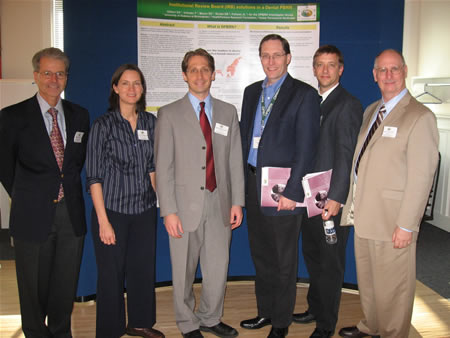 |
Article regarding the creation and development of the Dental Practice-Based Research Network in the January issue of JADA
Monday, January 07, 2008
The January 2008 issue of JADA features an article DPBRN entitled "The Creation and Development of the Dental Practice-Based Research Network". The article describes the creation and development of DPBRN, which originally began as the Alabama Dental Practice-Based Research Network in 2002. The article also explains the administrative and study development process within the network. Due to copyright restraints, only the abstract can be viewed. Click here to view the abstract on the PubMed website.
DPBRN named as an affiliate member of the Federation of Practice-Based Research Networks
Friday, January 04, 2008
The Federation of Practice-Based Research Networks (FPBRN) has named DPBRN as an affiliate member. The FPBRN is an organization that serves as a communication link for various practice-based research networks. Click here to visit the FPBRN website for further information.
PDA Executive Committee representative elected
Thursday, January 03, 2008
Dr. Dan Pihlstrom has been elected as the practitioner-investigator representative for the PDA region on the DPBRN Executive Committee. His three-year term will run from December 2007 – December 2010. The elections were held in November with over a 90% response rate!
Dr. Pihlstrom served on an appointed basis from 2005-2007 and continues to represent the PDA region in an expert and conscientious manner. Dr. Pihlstrom is a DPBRN practitioner-investigator in the Tigard Clinic in Tigard, Oregon and also serves as the PDA Associate Director and Chair of the Clinical Effectiveness Committee. Congratulations to Dr. Pihlstrom!


